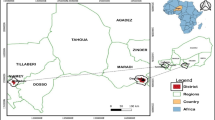Abstract
Increased planting of hard mast oak species in the Lower Missouri River floodplain is critical as natural regeneration of oak along the Upper Mississippi and Lower Missouri Rivers has been limited following major flood events in 1993 and 1995. Traditional planting methods have limited success due to frequent flood events, competition from faster growing vegetation and white-tailed deer herbivory. Results of early growth response of swamp white oak (Quercus bicolor Willd.) seedlings in relation to initial acorn mass and size, and early rapid shoot growth for seedlings produced by containerized root production method (RPM™), are presented. Containerized RPM™ seedlings grown in the greenhouse under optimal conditions demonstrate that seed size had no discernable impact on first-year root or shoot size. Seedling survival for the first two years and acorn production for the first three years after outplanting are presented, comparing use of containerized RPM™ swamp white oak seedlings to nursery stock. Flood tolerant precocious RPM™ oak seedlings in the floodplain provide a source of food for acorn-consuming wildlife ten to fifteen years sooner than oaks originating from natural regeneration, direct seeding or traditional bare root planting. Compared to bare root nursery stock that produced no acorns, some RPM™ swamp white oak seedlings averaged 4.3, 5.2, and 6.3 acorns/seedling in the first three years after fall outplanting.
Similar content being viewed by others
References
Anderson C. and Frost I. 1996. Growth of Quercus robur seedlings after experimental grazing and cotyledon removal. Acta Botanica Neerlandica 45(1):85-94.
Böhm W. 1979. Methods of studying root systems. Ecological Studies v.33. Springer-Verlag, New York, NY, 188 p.
Bonfil C. 1998. The effects of seed size, cotyledon reserves, and herbivory on seedling survival and growth in Quercus rugosa and Q. laurina (Fagaceae). American Journal of Botany. 85(1):79-87.
Bragg T.B. and Tatschl A.K. 1977. Changes in flood-plain vegetation and land use along the Missouri River from 1826 to 1972. Environmental Management 1(4):343-348.
Buckley D.S., Sharik T.L. and Isebrands J.G. 1998. Regeneration of northern red oak: positive and negative effects of competitor removal. Ecology. 79(1):65-78.
Christisen D.M. and Korschgen L.J. 1955. Acorn yields and wildlife usage in Missouri. Transactions of the North American Wildlife Conference. 20:337-356.
Dey D.C., Kabrick J., Grabner J. and Gold M. 2003. Restoring oaks in the Missouri River floodplain. In: Proceedings of the 29th Annual Hardwood Symposium. French Lick, Indiana, May 17-19. National Hardwood Lumber Association, p. 8-20.
Dwyer J.P., Wallace D. and Larson D.R. 1997. Value of woody river corridors in levee protection along the Missouri River in 1993. Journal of the American Water Resources Association. 33(2):481-489.
Geyer W.A., Neppl T., Brooks K. and Carlisle J. 2000. Woody vegetation protects streambank stability during the 1993 flood in Central Kansas. Journal of Soil and Water Conservation. 55(4):483-486.
Goodrum P.D., Reid V.H. and Boyd C.E. 1971. Acorn yields, characteristics, and management criteria of oaks for wildlife. Journal of Wildlife Management. 35(3):520-532.
Hirsch A. and Segelquist C.A. 1978. Ecological importance of the riparian zone. In: Proceedings, Strategies for Protection and Management of Floodplain Wetlands and Other Riparian Ecosystems. Callaway Gardens, Georgia, December 11-13.U.S.D.A, Forest Service, Washington, DC. General Technical Report WO-12:344-352.
Johnson J.H., Solomon R.C., Bingham C.R., Colbert B.K., Emge W.P., Mathis D.B. and Hall R.W. Jr. 1974. Environmental analysis and assessment of the Mississippi River 9-ft channel project between St. Louis, Missouri, and Cairo, Illinois. Technical Report Y-74-1 of U.S. Army Corps of Engineers St. Louis District.
Knutson M.G. and Klaas E.E. 1995. Local and regional habitat associations of upper Mississippi River floodplain forest birds and effects of forest fragmentation. In: Proceedings of the Mississippi River Research Consortium. 27th Annual Meeting, La Crosse, Wisconsin, April 27-28, 1995.
Long T.J. and Jones R.H. 1996. Seedling growth strategies and seed size effects in fourteen oak species native to different soil moisture habitats. Tree. 11: 1-8.
Newling C.J. 1990. Restoration of bottomland hardwood forests in the lower Mississippi valley. Restoration & Management Notes. 8(1):23-28.
Rice K.J., Gordon D.R., Hardison J.L. and Welker J.M. 1993. Phenotypic variation in seedlings of a “keystone” tree species (Quercus douglasii): the interactive effects of acorn source and competitive environment. Oecologia. 96:537-547.
Schopmeyer C.S. (Technical Coordinator) 1974. Seeds of Woody Plants in the United States.U.S.D.A., Forest Service, Washington, DC. Agriculture Handbook No.450:692-703.
Schweitzer C.J. and Stanturf J.A. 1997. From okra to oak: reforestation of abandoned agricultural fields in the Lower Mississippi Alluvial Valley. In: Proceedings of the 25th Annual Hardwood Symp. 7-10 May 1997. Cashiers, NC. Memphis, TN. 131-138.
Shaw G.W., Dey D.C., Kabrick J., Grabner J. and Muzika R.M. 2002. Comparison of the site preparation methods and stock types for artificial regeneration of oaks in bottomlands. In: VanSambeek J.W., Dawson J.O., Ponder F. Jr., Lowenstein E.F. and Fralish J.S. (Eds.), Proc., 13th Central Hardwood Forest Conference; April 1-3, 2002; Urbana-Champaign, Illinois. Gen. Tech. Rep. NC-xxx, U.S. Dept of Agriculture, Forest Service, North Central Research Station, St. Paul, MN.
Sonesson L.K. 1994. Growth and survival after cotyledon removal in Quercus robur seedlings, growth in different natural soil types. Oikos. 69:65-70.
Sparks R.E. 1995. Need for ecosystem management of large rivers and their floodplains. BioScience. 45(3):168-182.
Twedt D.J. and Portwood J. 1997. Bottomland hardwood reforestation for Neotropical migratory birds: Are we missing the forest for the trees? Wildlife Society Bulletin. 25(3):647-652.
U.S. Army Corps of Engineers, Lower Mississippi Valley Division 1996. Impacts of the Great Flood of 1993: upper Mississippi River and lower Missouri River Basins. Vicksburg, Mississippi. 223 p.
Yin Y., Nelson J.C. and Lubinski K.S. 1997. Bottomland hardwood forests along the Upper Mississippi River.Natural Areas Journal. 17(2): 164-173.
Author information
Authors and Affiliations
Corresponding author
Rights and permissions
About this article
Cite this article
Grossman, B., Gold, M. & Dey, D. Restoration of hard mast species for wildlife in Missouri using precocious flowering oak in the Missouri River floodplain, USA. Agroforestry Systems 59, 3–10 (2003). https://doi.org/10.1023/A:1026124717097
Issue Date:
DOI: https://doi.org/10.1023/A:1026124717097




